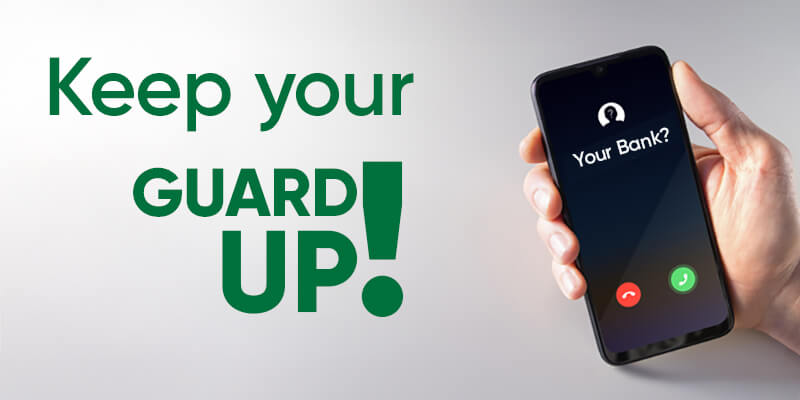Think You Got a Call or Text From WSFS? Three Ways to Know If It’s Us

When your bank reaches out, it’s typically important. It’s something scammers know and are using it to their advantage. That’s why impersonation fraud is on the rise as criminals try to get you to reveal your account information, and, ultimately, take money from you.
You can keep your guard up by looking for these five signs that it’s truly WSFS reaching out.
- Check the number – WSFS will rarely call you. If we do, it’s usually only because you contacted us first. If you get an unexpected call from us, hang up and call us directly at 888.973.7226. even if it looks like the number calling you. Scammers can easily spoof phone numbers to look like they are calling from the legitimate bank.
Occasionally, WSFS will text you with updates and alerts. All messages from WSFS will come from one of the following five-digit codes:
- 20736 is for automatically generated service alerts (i.e. to let you know you changed a password or updated your contact information) and self-enrolled alerts that you “opt in” for (i.e. account balance, transaction monitoring, automatic payment notice).
- 70169 is to let you know about important information and special announcements that are in My WSFSfeed. These texts will include a link that starts with https://mywsfsfeed.wsfsbank.com.
- 86975 is to provide you with card fraud alerts. We will let you know if there’s unusual activity on your card and usually will require a response from you to ensure your account has not been compromised. The texts include WSFS’ name, the last four digits of your account number, and information about the suspicious activity.
- Check the request – Most importantly, if you do get a call or text from us, know that we will never ask for your:
- Account Number
- PIN
- Password
- Personal Information
We already have access to that information, so a legitimate WSFS Associate won’t need it.
If you are sent a link, especially one asking you to log into your bank account, do not click on it. Go directly to your bank’s website and login through their verified system.
- Check the urgency – Scammers will use immediacy as a scare tactic requiring you to give your information, log into your account or send money through payment apps. Anything that requires you to “act now” even if it claims that there is suspicious activity on your account is likely fraudulent. Even if it seems legitimate, reach out to your bank directly.
If it seems suspicious it is likely a scam!
If you aren’t sure if you are receiving a legitimate call or text, hang up and call us directly at 888.973.7226. Our call center is open 7 a.m. – 7 p.m. ET Monday to Friday and 9 a.m. – 3 p.m. ET on weekends.
Above all, never give your personal information including account passwords and verification codes to unsolicited calls or texts.
If you unfortunately fall for a scam
- Hang up or stop contact with the fraudster immediately. Do not give any additional information to the person on the other end of the phone.
- File a report with the police, Federal Trade Commission (reportfraud.ftc.gov) and Federal Bureau of Investigation’s Internet Crime Complaint Center (IC3.gov).
- Put a fraud alert on your credit report with Equifax, Experian and TransUnion.
- Call your bank directly and have them freeze your accounts, get new account numbers, new debit/credit cards and monitor your account statements for fraudulent charges.
- Update all your online usernames and passwords.

Helping you boost your financial intelligence.
Read our financial resources from your friends at WSFS.



